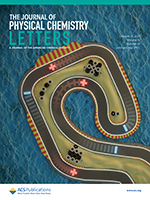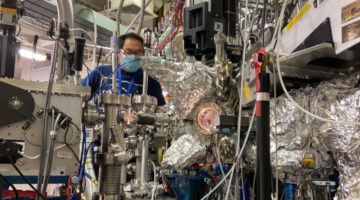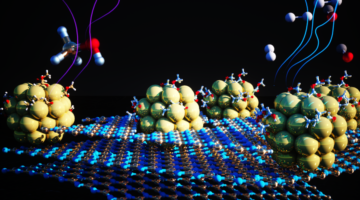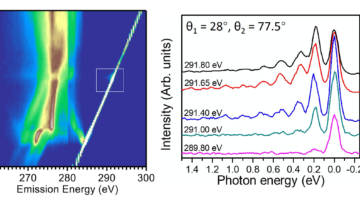Though iron has been demonstrated as an effective means to remediate arsenic contamination in groundwater, the mechanism was not well understood until now. For the first time, researchers have untangled the detailed steps of the interaction, informing more robust strategies for cleanup. Read more »
Interface Sensitivity in Electron/Ion Yield X-ray Absorption Spectroscopy: The TiO2–H2O Interface
To understand corrosion, energy storage, (electro)catalysis, etc., obtaining chemical information on the solid–liquid interface is crucial but remains extremely challenging. Here, x-ray absorption spectroscopy is used to study the solid–liquid interface between TiO2 and H2O. This result highlights the potential of electron-yield XAS to obtain chemical and structural information with a high sensitivity for the species at the electrode–electrolyte interface. Read more »
Trace Key Mechanistic Features of the Arsenite Sequestration Reaction with Nanoscale Zerovalent Iron
The advancing in situ XAS technique made it possible to uncover the As-nZVI reaction pathway, especially capturing transient reaction process at subsecond scale. Combining the in situ XAS experimental data with computational chemistry enabled the reaction steps to be verified, clarifying the unambiguous identification of the transit reactive intermediates. Read more »
Coulombically-stabilized oxygen hole polarons enable fully reversible oxygen redox
We investigate oxygen redox in layered Na2−xMn3O7, a positive electrode material with ordered Mn vacancies. Our results establish a complete picture of redox energetics by highlighting the role of coulombic interactions across several atomic distances and suggest avenues to stabilize highly oxidized oxygen for applications in energy storage and beyond. Read more »
David Prendergast Wins 2021 Shirley Award
David Prendergast, an internationally recognized computational scientist whose first-principles calculations of x-ray spectra have helped with the interpretation of countless experiments done at the ALS, has been awarded the 2021 Shirley Award for Outstanding Scientific Achievement by the ALS Users’ Executive Committee. Read more »
X-Ray Study Recasts Role of Battery Material from Cathode to Catalyst
Researchers used the ALS to learn about a lithium-rich battery material that has been the subject of much study for its potential to extend the range of electric vehicles and the operation of electronic devices. Through a fundamental spectroscopic study, they not only clarified the reaction mechanism of this material, but also found a conceptually different use of it as a catalyst. Read more »
Study Shines New Light on Li-Battery Cathode Materials
Researchers clarified key reaction mechanisms in a Li-battery cathode material, revealing its surprising utility as a catalyst for next-gen batteries. The work refutes widely held ideas about reversible reactions in a highly debated material for Li-based batteries and expands the range of materials suitable for use in high-power batteries and fuel cells. Read more »![]()
![]()
Redirecting dynamic surface restructuring of a layered transition metal oxide catalyst for superior water oxidation
Electrocatalysts, particularly those for water oxidation, often experience substantial or at least partial reconstruction. Here, Wang et al. are able to control surface reconstruction using a cationic redox-tuning method on layered LiCoO2–xClx catalysts for the oxygen evolution reaction. The resulting optimized catalyst exhibits excellent electrocatalytic performance in alkaline electrolyte. Read more »
Speeding Toward Improved Hydrogen Fuel Production
Researchers synthesized a material that speeds up one of the limiting steps in extracting hydrogen from alcohols. The catalyst cleanly and efficiently accelerates the removal of hydrogen atoms from a liquid chemical carrier. The material is robust, made from earth-abundant metals, and will help make hydrogen a viable energy source for a wide range of applications. Read more »
Detecting Phonon Overtones in Correlated Materials
Resonant inelastic x-ray scattering (RIXS) has recently been shown to be a promising technique for studying electron–phonon coupling in correlated materials. When a photoexcited electron interacts with phonons during decay, it shows up in the RIXS spectra as clear phonon overtones: higher-order excitations that appear as ripples in intensity. Read more »









